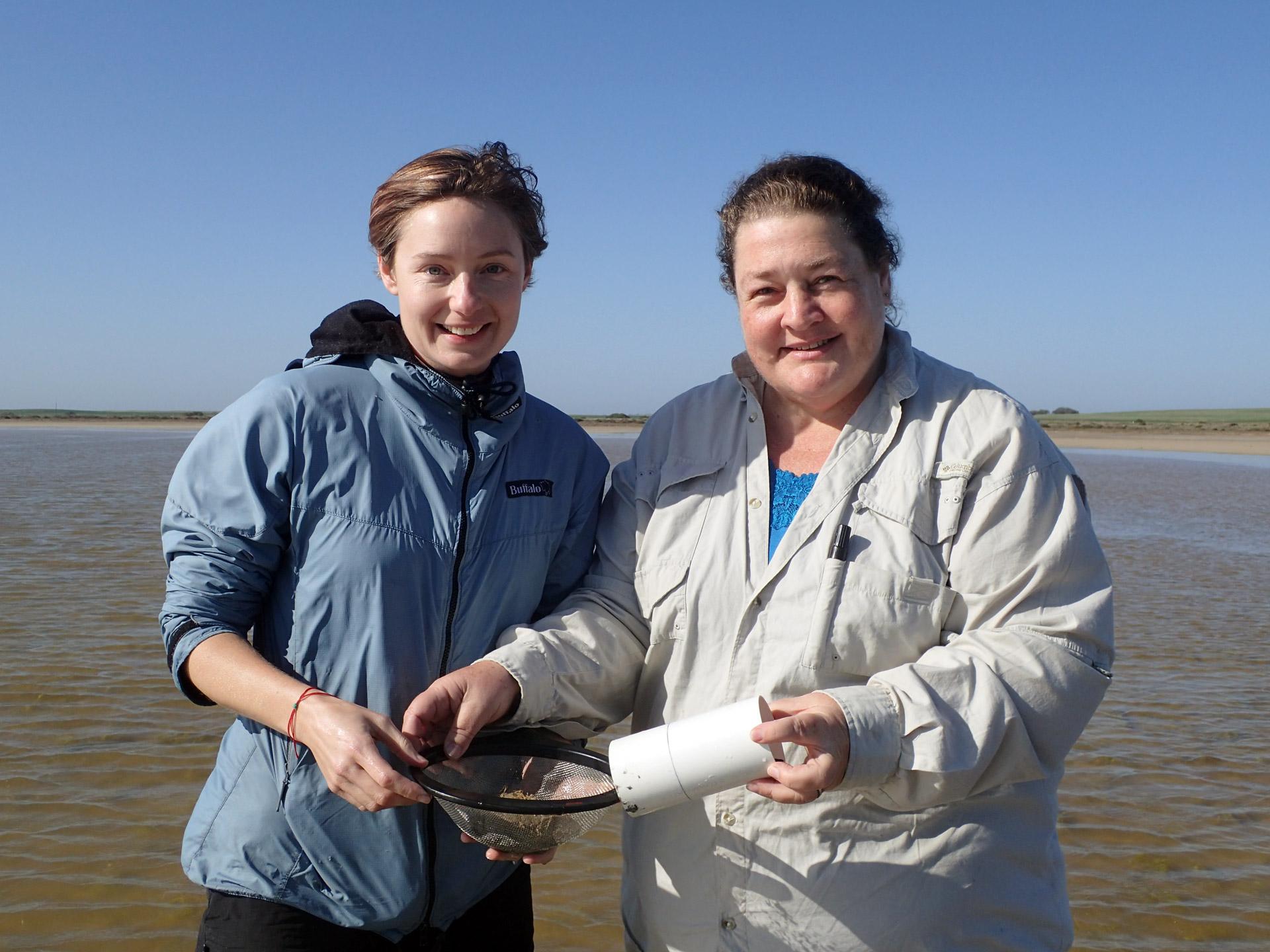Healthy coastal habitats combat climate change

Researchers Alice Jones and Michelle Waycott - Photo by Emma O'Loughlin
Blue carbon ecosystems such as seagrasses, mangroves and tidal saltmarshes have exceptional capacity to sequester carbon dioxide.
Compared to many terrestrial forests, these coastal vegetation communities can accumulate carbon at faster rates and store it for longer periods, making them an important tool to combat climate change.
The Goyder Institute for Water Research’s Coastal Carbon Opportunities project is among the first to research the potential for coastal systems to help mitigate climate change in South Australia, investigating the potential of South Australian coastal ecosystems to sequester and store carbon.
The two-year project, led by the University of Adelaide, in collaboration with Edith Cowan University, SA Water, SA EPA, and CSIRO, has produced a series of technical and summary reports covering:
- the impact of degradation on carbon storage and accumulation rates at three case study sites
- changes in the distribution of mangrove and saltmarsh across South Australia (1987 – 2015)
- ecosystem services provided by blue carbon habitats
- using drones to measure mangrove above-ground biomass
- vegetation dynamics at Mutton Cove (a site of tidal reconnection) .
“There’s over a million hectares of seagrass in the state. That ecosystem holds a lot of carbon, and it’s constantly sequestering more carbon every year,” says Dr Alice Jones, Research Associate from the School of Biological Sciences.
“For the area that they cover they punch above their weight in terms of the amount of carbon that’s stored compared to terrestrial ecosystems.
“Most of the blue carbon values used in the past have been based on tropical coastal ecosystems, so one of our main goals was to get baseline information about blue carbon in South Australia."
Large photo: Imagery shot from a drone. Photo - Unmanned Research Aircraft Facility

The team estimated that South Australia holds around 1.12 million hectares of blue carbon ecosystems, which is as much as 10% of the blue carbon habitat of all of Australia. Blue carbon habitats in South Australia contained about 5% (up to 76 Mt) of the nation’s soil organic carbon stocks, of which about 90% is in seagrass ecosystems. South Australian blue carbon ecosystems sequester 0.11–0.14 Tg Corg y-1 .
The Coastal Carbon Opportunities project provided critical knowledge for the State Government’s Blue Carbon Strategy, recently released by Hon Minister Speirs MP (Minster for Environment and Water), by filling key knowledge gaps and drawing on team members’ expertise on its technical reference panel.
They have also contributed to a Blue Carbon Research Projects Synthesis Report and Research agenda for blue carbon in South Australia in partnership with colleagues from the Institute’s Salt to C research project, led by Professor Sabine Dittmann at Flinders University.
The research agenda outlines the way forward for blue carbon research in SA as well as opportunities to increase carbon sequestration, potentially with options for carbon crediting.
As well as collecting baseline blue carbon information, the team looked at the effects of human coastal activity on carbon sequestration in seagrass and mangrove/saltmarsh environments.
“We found that the impacted sites had at least two times less carbon than the unimpacted sites,” says Dr Jones
“That information’s helping us understand what the implications are in terms of carbon release when there’s coastal development or changed tidal flow.”
Through the project the team also developed new techniques to measure above-ground mangrove biomass using drones and investigated the value of the ecosystem services that blue carbon habitats provide.
Habitat protection and restoration can increase the carbon sink value of coastal environments, as well as enhance the many other ecosystem services they provide. Highlighting these opportunities in South Australia could be a vital element in remediating coastal vegetation communities and increasing the carbon sequestration and storage capacity of mangrove and saltmarsh ecosystems throughout the state.
Further information
Read more about the project’s research findings in the project reports or contact Dr Alice Jones for more information. You can also keep up-to-date with the team’s progress on Twitter or through its project website.




